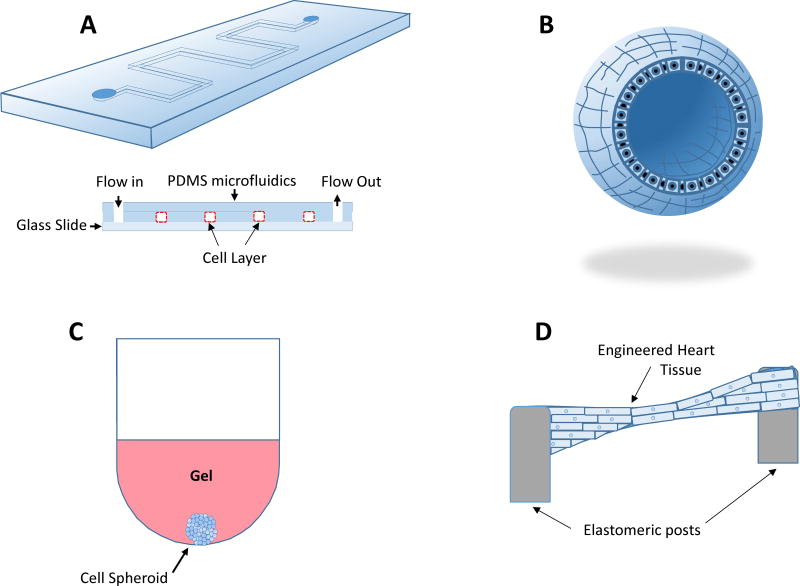Figure 2.
In vitro testing of cells and tissues may occur in several ways. Microfluidic systems (A) have emerged as a tool for basic science studies of the effect of highly controlled fluid mechanical and solid mechanical forces on single cell types or co-cultures. Microfluidic systems are also gaining favor as a diagnostic tool and a platform for drug development. Organoid cultures (B) are described as organ buds grown in culture that feature realistic microanatomy and are useful as cellular models of human disease. These cultures have found utility in the study of basic mechanisms of organ-specific diseases. Spheroid cultures (C) feature sphere-shaped clusters of a single cell type or co-culture sustained in a gel or a bioreactor in order to interact with their 3D surroundings and are useful in testing drug efficacy and toxicity. (D) Engineered heart tissues are constructed by polymerizing an extracellular matrix-based gel containing cardiac cell types between two elastomeric posts or similar structures allowing auxotonic contraction of cardiomyocytes. This allows to mimic the normal conditions of the heart contracting against the hydrostatic pressure imposed by the circulation. This type of tissue construct has been used for testing toxicity of drugs and basic studies of muscle function and interplay between multiple cardiac cell types.

